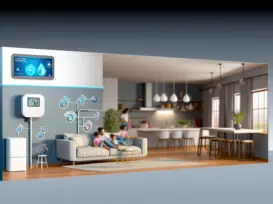Grus Home Energy - Leak prevention strategies
Comprehensive Guide to Leak Prevention in Industrial and Residential Settings
Comprehensive Guide to Leak Prevention in Industrial and Residential Settings
Leak prevention is an essential aspect of maintaining any infrastructure, be it residential or industrial. Ensuring that liquids or gases do not escape from their designated systems not only conserves resources but also prevents damage and increases safety. A robust leak prevention strategy involves several components that work together to protect against leaks.
The first step in leak prevention is the proper design and installation of systems. This involves selecting the right materials and components that are specifically designed to handle the type and pressure of the fluid they will contain. Pipes, valves, and tanks must be chosen based on their compatibility with the substances they will carry, and their installation must comply with industry standards and guidelines.
Regular maintenance and inspection are also crucial to leak prevention. Over time, wear and tear on system components can lead to vulnerabilities. By implementing a schedule for routine checks, any potential issues can be identified early, and the necessary repairs or replacements can be made before a leak occurs. This includes looking for signs of corrosion, checking seals and gaskets, and ensuring that all connections are tight and secure.
Another important aspect of leak prevention is the use of monitoring systems. These can range from simple manual checks to sophisticated electronic sensors that detect changes in pressure or the presence of leaked substances. Monitoring systems provide an early warning that allows for quick response to prevent further leakage or to mitigate any damage that may have occurred.
Training personnel is also imperative for effective leak prevention. Employees should be educated about the importance of maintaining system integrity, how to recognize signs of potential leaks, and the proper procedures for responding to a leak. A well-informed staff is a first line of defense against leaks, as they are more likely to spot issues before they become serious problems.
In addition to these measures, the use of advanced materials and technologies has been gaining traction in leak prevention strategies. For instance, smart piping systems with self-healing capabilities can automatically seal small leaks without human intervention. There are also coatings and sealants available that can be applied to existing systems to enhance their leak resistance.
Emergency preparedness is another important component. Despite the best efforts, leaks can still occur, and having a plan in place ensures that the response is quick and effective. This plan should include steps for containing leaks, protecting personnel and the environment, and communicating with relevant parties, including regulatory bodies if necessary.
Lastly, compliance with regulatory standards cannot be overstated. Government and industry regulations often set forth specific requirements for leak prevention and control. Adherence to these standards helps to ensure that all necessary precautions are taken and provides a framework for continuous improvement.
In conclusion, leak prevention requires a multi-faceted approach that includes careful planning, regular maintenance, vigilant monitoring, staff training, utilization of advanced technologies, emergency preparedness, and compliance with standards. By adopting these strategies, organizations can protect their assets, conserve resources, and ensure a safe environment for workers and the community at large.
©2025 All Rights Reserved. Grus IoT Co.,Ltd.
